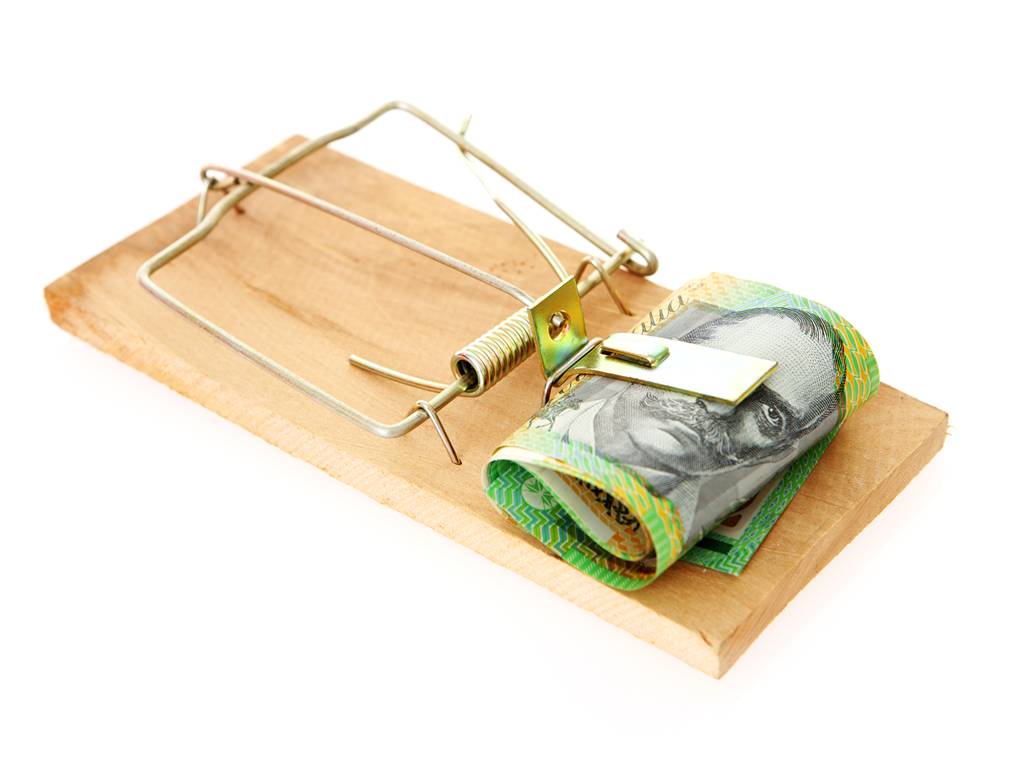Nine mortgage traps that sabotage your investing goals

Pic via Getty Images
Words by Bryce Holdaway and Ben Kingsley
We’ve seen it time and time again. Smart, motivated investors who tick every box, except one. And it’s the one thing that quietly unravels their entire portfolio. The culprit? Poor loan structuring.
After decades working in the trenches of property investing, both as advisers and investors ourselves, we can confidently say property isn’t just about bricks and mortar; it’s a game of finance.
When done right, it sets you up for flexibility, control, and future growth. But when done wrong it can limit your borrowing power, trap your equity, and stall your passive income goals, sometimes before you’ve even realised what’s happening.
Let’s unpack the most common mortgage mistakes we’ve seen over nearly three decades of advising and investing in property ourselves and how to avoid them.

1. Cross-securing your loans
One of the biggest errors we see is cross-securitisation. This happens when banks tie multiple properties together as security for one big loan. Sounds simple, but here’s the catch: it gives the bank all the power and you none.
Want to sell one property? You might need to revalue or refinance the entire portfolio. Want to access equity in just one? Tough luck.
It might be locked up by the other’s value. The solution? Separate loans for each property, secured only against that property. This gives you flexibility, control, and the ability to refinance or sell without affecting your whole portfolio.
2. Using a generalist broker over an investment-savvy one
Walking into your local bank branch or using a standard mortgage broker might seem fine for your first loan. But if you’re building a portfolio, you need a broker who thinks like an investor. An investment-savvy broker will structure your lending strategically, not just secure the next loan.
They’ll help you avoid cross-collateralisation, balance fixed and variable splits, set up offset accounts, and spread lending across multiple lenders to avoid hitting a borrowing ceiling. Most importantly, they’ll help you think one, two, even three loans ahead, so every decision today supports the next opportunity tomorrow.
How do you find one? Here are a few things to look for when choosing an investment-savvy broker.
-Ask how many of their clients are property investors, and how often they help clients buy their second or third property.
-Pay attention to whether they ask about your long-term goals, things like starting a family, career changes, or schooling plans. These are signs they’re thinking ahead, not just about the next loan.
-Check for industry awards and read their Google reviews. Look for feedback from long-term clients or repeat investors, it’s a great way to spot brokers with a proven track record.
-Make sure they’re strategic and proactive, with access to a wide lending panel and up-to-date knowledge of lender policies.
And of course, educating yourself helps too so you can ask better questions, understand key terms, and avoid getting lost in the jargon.
3. Not understanding the three types of debt
Most people only see “good” vs “bad” debt. But we like to take it further. There’s horrible, tolerable, and productive debt.
Horrible debt drags you down (think credit cards or payday loans).
Tolerable debt is your own home loan. It’s useful, but not income-producing.
Productive debt is the gold. It’s the debt you take on to invest in assets that grow in value and generate income.
Knowing the difference is the key to using debt as a tool, not a trap.
4. Skipping a borrowing strategy
“Can I get a loan?” is the wrong first question. The right one is, “How do I structure my lending to support my long-term plan?”. Borrowing capacity is just a snapshot in time. But a smart borrowing strategy helps you plan several properties ahead, like a chess master thinking three moves in advance.
5. Forgetting about short-term tactics
Want to boost your borrowing power? Sometimes it’s about short-term tactics like pausing super contributions, reducing credit limits, or paying off consumer debt before applying. Remember, tactics support the strategy, not the other way around. Don’t make long-term sacrifices for short-term wins.
6. Choosing the wrong loan repayment type
We often recommend principal & interest (P&I) for your own home but for investment properties interest-only (IO) can be a smart choice in the early years. Why? Lower repayments free up cash flow, and the debt is tax-deductible. You can always switch to P&I later when the portfolio is more established.
7. Ignoring interest rate competitiveness
Yes, structure trumps rate but don’t sleep on savings. Lenders constantly tweak rates based on risk, repayment type, and LVRs. That’s why we always say stay close to your mortgage broker and review regularly.
8. Not using an offset account
A 100 per cent offset account is one of the best tools in the playbook. Instead of parking cash in a savings account and paying tax on the interest, link it to your loan and reduce your daily interest payable while keeping your cash accessible. It’s like having your cake and eating it too.
9. Skipping the buffer
What happens if interest rates rise? Or your property sits vacant? Or you face an unexpected medical bill? That’s where your buffer comes in. It’s not a “nice to have” it’s essential protection. Whether it’s cash or available redraw, every portfolio needs a rainy-day fund.
Property investing isn’t about how many properties you own, it’s about how well you structure them. By thinking like a strategic investor, not just a borrower, you take control of your future. Just as crucial is surrounding yourself with the right team. They will include investment-savvy brokers, qualified property investment advisers (QPIA), and trusted advisers who understand how to build wealth the right way. Because when you structure your finances with intention, you’re not just unlocking individual properties, you’re unlocking your pathway to financial freedom. So don’t borrow blind. Structure smart, and let your money do the heavy lifting.
This is an edited extract from Bryce Holdaway and Ben Kingsley’s book, How to Retire on $3,000 a Week: The Property Couch’s Playbook for Passive Property Investing (Major Street Publishing RRP $32.99).
This article first appeared in The Australian.
Related Topics
UNLOCK INSIGHTS
Discover the untold stories of emerging ASX stocks.
Daily news and expert analysis, it's free to subscribe.
By proceeding, you confirm you understand that we handle personal information in accordance with our Privacy Policy.








